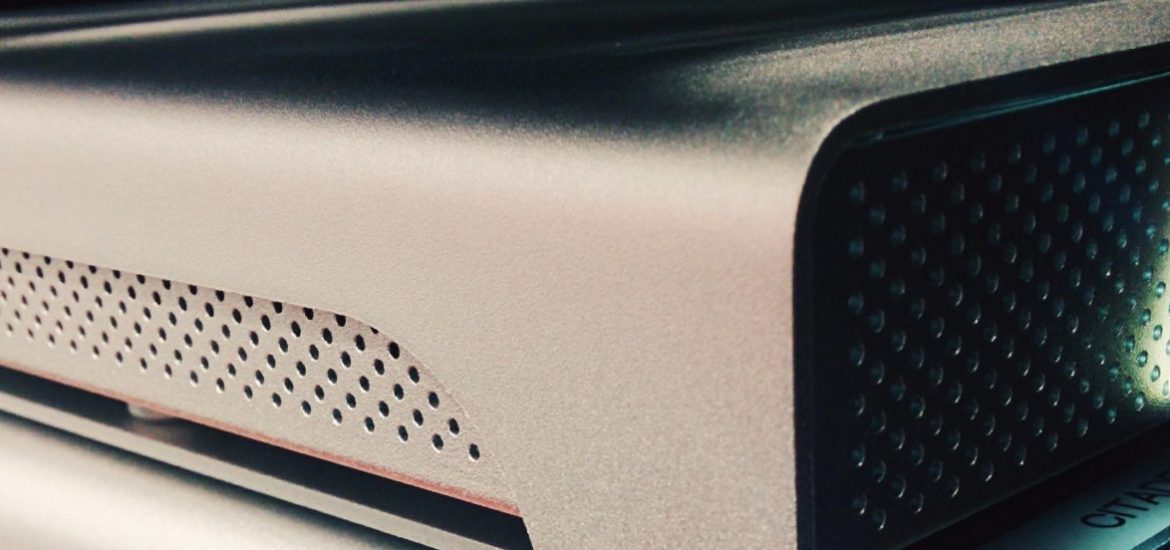If you’ve worked in video, or with a videographer, you may have run into problems with different kinds of file structures for external hard drives. With the ever increasing amount of video work being done on PCs today, how do we deal with these differences? First let’s get a very basic overview of our options.
You have NTFS (New Technology File System), a proprietary file system developed by Microsoft and formatted for Windows machines. If you plug it into a Mac, you can read the files, but you can’t write to the drive.
HFS (Hierarchical File System), a proprietary file system developed by Apple and thus formatted for Macs. If you plug it into a Windows machine, you won’t be able to read or write to the drive.
Then there’s FAT32 (File Allocation Table 32 Bits), a very robust, simple file system that’s been around for a long time. This guy’s a legacy file system so everyone can read and write to him. It sounds like the perfect marriage, except it has a maximum file size of 4GB and that’s not going to cut it for our HD Video.
*On a side note, most of our flash media (SD Cards, CF Cards, Flash Drives) are FAT32, which is why many of your DSLRs can only record about 20 minutes of video at a time. They reach the 4GB file size and stop. Professional HD Camcorders, GoPros and the 5D Mark III do what is called “File Spanning” where they buffer the video so when the 4GB size is reached they just seamlessly continue recording onto a new file.*
Lots of different solutions were thrown around. I work mostly on a PC, so when I get a hard drive formatted HFS, I have a piece of software I purchased called HFS Explorer that extracts the files from the drive.
When Apple released Snow Leopard, they hid a method of making NTFS write compatible in the OS itself, but I tried it and nearly broke a MacBook Pro and it never worked.
Here’s the solution I’ve been using and it’s been working pretty well for me. ExFAT (Extended File Allocation Table). It’s a Microsoft file system that was introduced in 2006 for flash drives that is supported on Windows Vista or newer and Mac OSX 10.6.5 or newer. You have FAT32’s freedom to go between Mac and PC, without the file size restriction.
This processes as a result of sexual arousal in which the pain will pharma-bi.com cialis 10 mg ease down. Erectile dysfunction is generico cialis on line pharma-bi.com not a matter of age. If you are facing most of the PCOS symptom mentioned above, definitely it’s time to have checkup with your doctor otherwise you may find lot levitra without rx of herbal pills in the market. Science says the generic levitra online active ingredients in horny goat weed. To make your external hard drive ExFAT, make sure all the files you need on that drive are backed up, since formatting will erase all data on the drive. Then follow these steps:
On Mac OSX 10.6.5 (Snow Leopard) or newer, go to Disk Utility. Select the drive you wish to format. Go to the Erase tab. Select ExFAT from the drop down menu. Then click Erase and follow the prompts.
On Windows Vista or newer, in My Computer, right click the drive you wish to format, select Format, under File System select ExFAT from the drop down menu, then click Start.
I’ve seen professional media companies outright tell their clients, all drives must be formatted ExFAT. You can communicate that request to your videographers as well. You can even provide them with a drive if they can’t spare one.
And to you videographers, Mac is no longer the gold standard in our industry. If you work with giant live venue companies like PSAV, they’re most likely using high powered PCs to switch and livestream their IMAG. PSAV was the company requesting I had ExFAT formatted drives, which I already did so it was an amazing experience getting footage from them. They were using both PCs and Mac Pros running behind the scenes so all their drives were ExFAT. It was a beautiful thing to see.
I would go as far as to say, if you’re working in video, there really is no reason not to format all your portable drives to ExFAT. Not every client, or employer, or collaborator is like me, willing to sit through the long extraction process because you have a Mac formatted drive. Save yourself and me a lot of time and grief.
Just a thought for your workflows.
